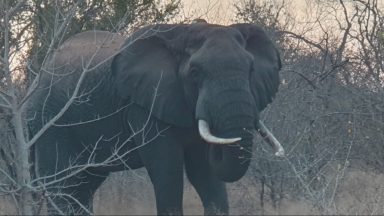A recent translocation project is seeing the introduction of 95 eland, Africa’s second largest antelope, translocated from Vilanculos Coastal Wildlife Sanctuary to both Zinave and Maputo national parks in Mozambique. After surpassing the ideal carrying capacity for eland and acting in the best interests of human-wildlife coexistence in The Sanctuary, translocation logistics service provider, Conservation Solutions, with support from Peace Parks Foundation and Mozambique’s National Administration For Conservation Areas (ANAC), are now translocating the mega-herd to areas where they will have space to thrive. Importantly, in both receiving parks, the eland will step into their important role of keeping the ecosystems healthy and balanced.
This is part of an intensive rewilding programme in Zinave National Park, where eland that once roamed the open grasslands and plains will now be reintroduced after numbers have almost dropped to zero in the area over the past few decades. In Maputo, they will boost the current population with fresh genetics, strengthening the founder population.
After completing the boma setup, which you can learn more about here, it’s time to start catching the eland in preparation for the translocation ahead.
A Dynamic Coexistence
Vilanculos Coastal Wildlife Sanctuary’s General Manager, Dave Gilroy, explains that many parts of Mozambique do not follow a traditional approach to conservation where a fence separates the communities and the wildlife. Instead, there is a dynamic arrangement where many of the communities still co-exist with wildlife within a park’s boundaries. It is therefore of the utmost importance that these conservation areas engage with the local communities, listening to their ideas and challenges as well as including them in any major decisions being made. This process ensures that human-wildlife conflict is kept to a minimum.
The 95 antelope being caught today are those that have been encroaching on the space of the community who live within the park’s buffer zone.
Safety First
After being successfully loaded onto the trucks, plastic piping is placed on the horns of each eland to prevent them from injuring themselves or each other during the long journey ahead. Further to this, a team of wildlife vets are also tranquillising the animals to ensure that they remain calm on the road. At each stop along the way, the vets will inspect the precious cargo and top-up the eland that might need it.
This mission will not only boost the health and biodiversity of the ecosystems of two protected areas but will also have a massive impact on the people living in the landscape through increased tourism opportunities.
Don’t miss out on Peace Parks TV this week to see how this translocation unfolds.

